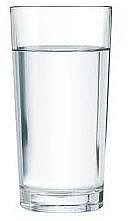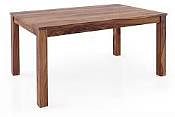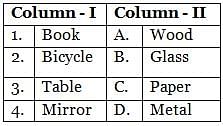Class 2 Exam > Class 2 Tests > Science Olympiad for Class 2 > Olympiad Test Level 1: Water and Rocks - 2 - Class 2 MCQ
Olympiad Test Level 1: Water and Rocks - 2 - Class 2 MCQ
Test Description
15 Questions MCQ Test Science Olympiad for Class 2 - Olympiad Test Level 1: Water and Rocks - 2
Olympiad Test Level 1: Water and Rocks - 2 for Class 2 2024 is part of Science Olympiad for Class 2 preparation. The Olympiad Test Level 1: Water and Rocks - 2 questions and answers have been
prepared according to the Class 2 exam syllabus.The Olympiad Test Level 1: Water and Rocks - 2 MCQs are made for Class 2 2024 Exam. Find important
definitions, questions, notes, meanings, examples, exercises, MCQs and online tests for Olympiad Test Level 1: Water and Rocks - 2 below.
Solutions of Olympiad Test Level 1: Water and Rocks - 2 questions in English are available as part of our Science Olympiad for Class 2 for Class 2 & Olympiad Test Level 1: Water and Rocks - 2 solutions in
Hindi for Science Olympiad for Class 2 course. Download more important topics, notes, lectures and mock
test series for Class 2 Exam by signing up for free. Attempt Olympiad Test Level 1: Water and Rocks - 2 | 15 questions in 30 minutes | Mock test for Class 2 preparation | Free important questions MCQ to study Science Olympiad for Class 2 for Class 2 Exam | Download free PDF with solutions
Detailed Solution for Olympiad Test Level 1: Water and Rocks - 2 - Question 1
Olympiad Test Level 1: Water and Rocks - 2 - Question 2
The picture of the object given below is :


| 1 Crore+ students have signed up on EduRev. Have you? Download the App |
Olympiad Test Level 1: Water and Rocks - 2 - Question 3
Choose the odd one out.
Table, Stool, T- shirt, Cricket bat
Detailed Solution for Olympiad Test Level 1: Water and Rocks - 2 - Question 3
Olympiad Test Level 1: Water and Rocks - 2 - Question 4
Which of these is an example of liquid water ?
Detailed Solution for Olympiad Test Level 1: Water and Rocks - 2 - Question 4
Olympiad Test Level 1: Water and Rocks - 2 - Question 5
Matter can be changed from one form to another by _____.
Detailed Solution for Olympiad Test Level 1: Water and Rocks - 2 - Question 5
Olympiad Test Level 1: Water and Rocks - 2 - Question 6
Which of the following object is/are not an example of opaque objects ?
Detailed Solution for Olympiad Test Level 1: Water and Rocks - 2 - Question 6
Olympiad Test Level 1: Water and Rocks - 2 - Question 7
Choose the odd one out :
Books, Table, Milk, Spoon
Detailed Solution for Olympiad Test Level 1: Water and Rocks - 2 - Question 7
Detailed Solution for Olympiad Test Level 1: Water and Rocks - 2 - Question 8
Detailed Solution for Olympiad Test Level 1: Water and Rocks - 2 - Question 9
Detailed Solution for Olympiad Test Level 1: Water and Rocks - 2 - Question 10
Detailed Solution for Olympiad Test Level 1: Water and Rocks - 2 - Question 11
Olympiad Test Level 1: Water and Rocks - 2 - Question 12
The picture given below is made up of what material ?

Detailed Solution for Olympiad Test Level 1: Water and Rocks - 2 - Question 13
Detailed Solution for Olympiad Test Level 1: Water and Rocks - 2 - Question 15
|
39 videos|40 docs|76 tests
|
Information about Olympiad Test Level 1: Water and Rocks - 2 Page
In this test you can find the Exam questions for Olympiad Test Level 1: Water and Rocks - 2 solved & explained in the simplest way possible.
Besides giving Questions and answers for Olympiad Test Level 1: Water and Rocks - 2, EduRev gives you an ample number of Online tests for practice
|
39 videos|40 docs|76 tests
|
Download as PDF



















